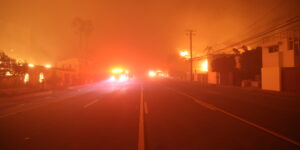Boeing said on Monday it has not found fatigue cracks on in-service 787 jets that have gone through heavy maintenance, as the planemaker defended the twin-aisle aircraft program ahead of a U.S. Senate hearing on Wednesday.
Last week, a Boeing whistleblower alleged that the company dismissed safety concerns about the assembly of its 787 and 777 jets that fly international routes. The whistleblower, Boeing quality engineer Sam Salehpour, is set to testify in the Senate hearing on the company’s safety culture.
Salehpour has claimed that Boeing failed to adequately shim, or use a thin piece of material to fill tiny gaps in a manufactured product, an omission that could cause premature fatigue failure over time in some areas of the Boeing 787 Dreamliner.
His claims, which are being investigated by the U.S. Federal Aviation Administration (FAA), include remarks that he saw workers “jumping on the pieces of the airplane to get them to align.”
Boeing has been grappling with a full-blown safety crisis that has undermined its reputation following a Jan. 5 mid-air panel blowout on a 737 MAX single-aisle plane.
On a call with reporters on Monday, two senior Boeing officials said there were zero airframe fatigue findings among the near 700 in-service Dreamliner jets that have undertaken heavy maintenance inspections after six years and 12 years.
“All these results have been shared with the FAA,” said Steve Chisholm, Boeing’s chief engineer, mechanical and structural engineering.
Boeing halted deliveries of the 787 widebody jet for more than a year until August 2022 as the FAA investigated quality problems and manufacturing flaws.
In 2021, Boeing said some 787 airplanes had shims that were not the proper size and some aircraft had areas that did not meet skin-flatness specifications.
The 787, which was launched in 2004, had a specification of five-thousandths of an inch gap allowance within a five-inch area, or “the thickness of a human hair,” said Lisa Fahl, vice president of Boeing Commercial Airplanes airplane programs engineering.
She said reports of workers jumping on plane parts were “not part of our process.”
Salehpour’s attorney, Debra Katz, said in an emailed statement that her client tried for years to see data that would address his concerns about the safety of gaps in the 787.
“Any data provided by Boeing should be validated by independent experts and the FAA before it is taken at face value,” Katz said.
(Reporting by Allison Lampert in Montreal. Editing by Matthew Lewis)





















 E&S Market Sees 21% Compound Growth Within Past 5 Years: Conning
E&S Market Sees 21% Compound Growth Within Past 5 Years: Conning  2025 Underwriting Profit and ‘Shop-a-Palooza’ Predicted for Auto Insurance
2025 Underwriting Profit and ‘Shop-a-Palooza’ Predicted for Auto Insurance  The Institutes, Kevelighan Fire Back at Retaliation Claims by Former Triple-I Employee
The Institutes, Kevelighan Fire Back at Retaliation Claims by Former Triple-I Employee  Swiss Re’s Business Unit CEOs Share Views on Key Risk Themes of 2025
Swiss Re’s Business Unit CEOs Share Views on Key Risk Themes of 2025 